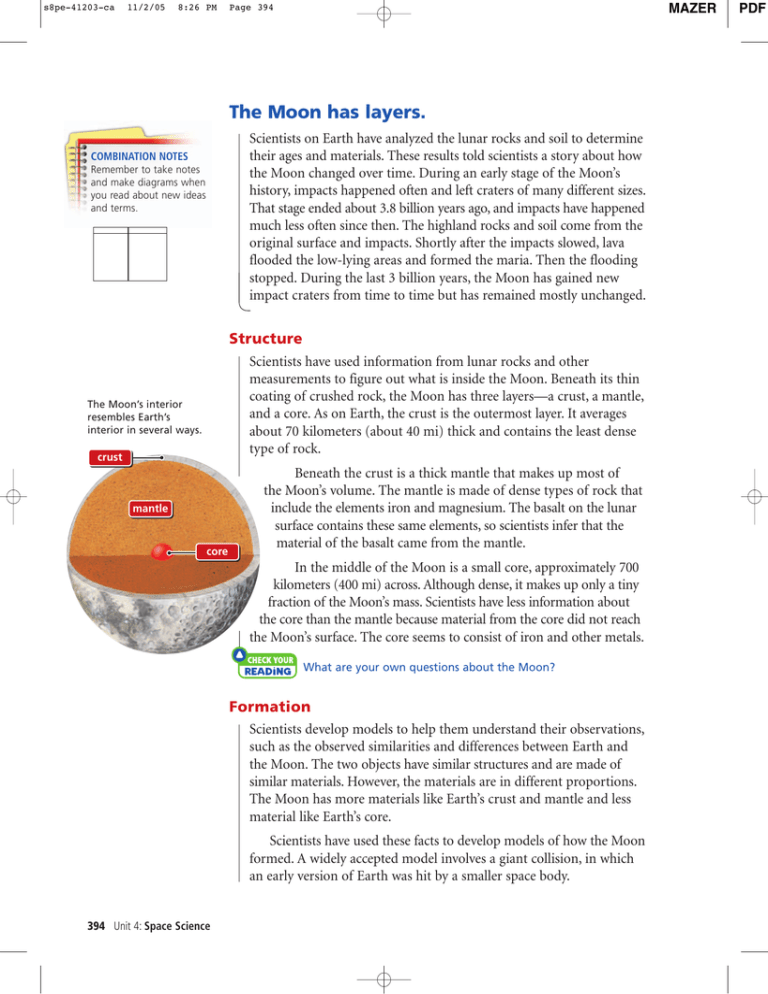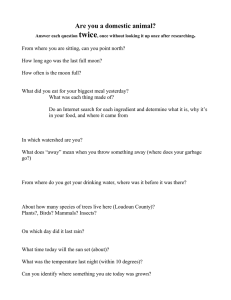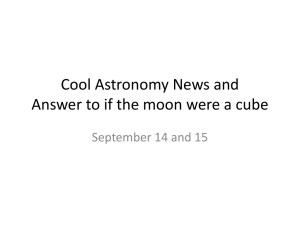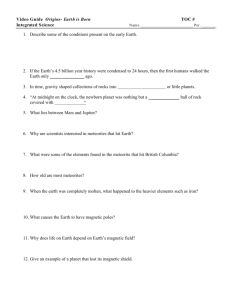The Moon has layers.
advertisement

s8pe-41203-ca 11/2/05 8:26 PM MAZER Page 394 The Moon has layers. Scientists on Earth have analyzed the lunar rocks and soil to determine their ages and materials. These results told scientists a story about how the Moon changed over time. During an early stage of the Moon’s history, impacts happened often and left craters of many different sizes. That stage ended about 3.8 billion years ago, and impacts have happened much less often since then. The highland rocks and soil come from the original surface and impacts. Shortly after the impacts slowed, lava flooded the low-lying areas and formed the maria. Then the flooding stopped. During the last 3 billion years, the Moon has gained new impact craters from time to time but has remained mostly unchanged. COMBINATION NOTES Remember to take notes and make diagrams when you read about new ideas and terms. Structure Scientists have used information from lunar rocks and other measurements to figure out what is inside the Moon. Beneath its thin coating of crushed rock, the Moon has three layers—a crust, a mantle, and a core. As on Earth, the crust is the outermost layer. It averages about 70 kilometers (about 40 mi) thick and contains the least dense type of rock. The Moon’s interior resembles Earth’s interior in several ways. crust mantle core Beneath the crust is a thick mantle that makes up most of the Moon’s volume. The mantle is made of dense types of rock that include the elements iron and magnesium. The basalt on the lunar surface contains these same elements, so scientists infer that the material of the basalt came from the mantle. In the middle of the Moon is a small core, approximately 700 kilometers (400 mi) across. Although dense, it makes up only a tiny fraction of the Moon’s mass. Scientists have less information about the core than the mantle because material from the core did not reach the Moon’s surface. The core seems to consist of iron and other metals. Check Your Reading What are your own questions about the Moon? Formation Scientists develop models to help them understand their observations, such as the observed similarities and differences between Earth and the Moon. The two objects have similar structures and are made of similar materials. However, the materials are in different proportions. The Moon has more materials like Earth’s crust and mantle and less material like Earth’s core. Scientists have used these facts to develop models of how the Moon formed. A widely accepted model involves a giant collision, in which an early version of Earth was hit by a smaller space body. 394 Unit 4: Space Science PDF





